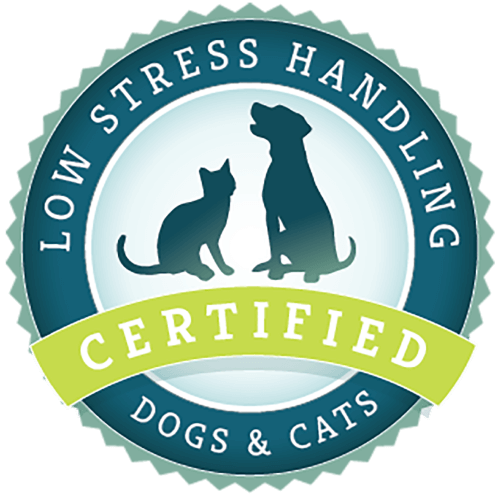What article are you looking for?
Category: I am a Veterinary Professional
Scrub Jay vs. Dog: Who is Smarter?
My Australian Cattledog, Zoe, was pretty cute, but when it came to brain power, she was no match for her little blue neighbor —a common scrub jay. This three inch tall feathered sneak has her number. Every day, he would lie in wait and then steal bits of her coveted meal right from under her nose. Here’s how it would happen: It’s breakfast or dinner and Mr. Scrub Jay knows. He hears the call of dog food rattling in Zoe’s food-dispensing toy. She’s carefully sucking the kibbles up as they dribble out onto the ground, but he’s sure she’ll soon
My Dog is Fearful of Strangers: Tethering Dogs in Front of Stores
Question: Our 5-year-old Soft-Coated Wheaten Terrier presents as a furry, lovable and inviting dog while he sits waiting outside the cafe for me to finish my morning latte. Trouble is, he’s taken to growling and barking at some well-meaning types, especially those who come on too enthusiastically. It’s like they invade his space. This behavior is slowly starting to accelerate. What would be the best approach short of hanging a sign on him saying “Beware, looks can be deceiving”? — San Francisco Answer: You nailed the problem on the head. While Fido might be carefree and confident with you alongside,
Which Category of Operant Conditioning is It?
Thirty years ago, this cartoon would have used the term punishment instead of incorrectly using the term negative reinforcement. But starting somewhere around the early 1990s, people have increasingly used the term negative reinforcement in cases where the technique is clearly punishment—that is when the technique is meant to stop a behavior. It probably has something to do with the fact that spanking and physical force are now frowned upon when dealing with kids. And the term negative reinforcement seems nicer to some. I’ve defined the four categories of operant conditioning: positive reinforcement, negative reinforcement, positive punishment, and negative
Gentle Leader Head Collar: Reinforcement or Punishment?
broc A reader who uses Gentle Leader head collars regularly in training recently asked me about the use of the head collar. States the reader, “I have gotten myself totally confused and need help sorting it out. What category of operant conditioning does the head collar use fall under? Negative punishment? Positive reinforcement? Negative Reinforcement? Positive punishment?” You might think that being able to correctly determine the category of operant conditioning is just a scientific exercise; however, it’s much more than that. For instance, say you read an ad for a product that says it uses negative reinforcement to stop
Cat Injections: Training Your Cat to Love Injections Without Ruining Your Relationship
At first we gave the insulin but then Mochi started hiding from us. We didn’t want to make her hate us, so we discountinued the treatment even though we knew that without she wouldn’t live long. How many times have you heard something like this where a client fails to carry through with treatment because the treatment ruins her bond with her pet? If the treatment is an injection of some sort, this type of situation should not happen because it’s easy to train cats to love getting injections and this comfort with injections can be taught in just a
World Rabies Day: How Vaccinations Can Stop Epidemics
When you live in a country such as the United States, where vaccination of dogs and cats is common, at least in your neighborhood, it can be easy to forget that there’s a reason why we vaccinate. The core vaccines we provide to our pets were invented in response to specific fatal outbreaks and epidemics that have killed many animals but that are much less frequent now due to our widespread vaccination programs. One can be reminded of the negative effects of non-vaccination by looking at shelters statistics or by visiting a developing country. Says Janice Girardi, founder and director

Low Stress Handling® Silver-Level Certification
Individual Certification at this level demonstrates to clients and employers the individual’s dedicated interest in Low Stress Handling®. Hospital Certification at this level demonstrates to clients and staff the hospital’s commitment to appropriately training staff in Low Stress Handling® methods.
Learn More
